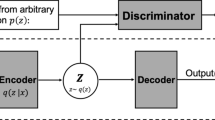Abstract
In network intrusion detection, the recognition and detection rate of intrusion detection may be reduced due to the lack of sample attributes or insufficient labels. In order to overcome this problem, this paper proposes a semi-supervised intrusion detection algorithm based on auto-encoder. The auto-encoder is adopted to extract features from all samples. For the labeled samples, cross-entropy is adopted for classification. For the unlabeled samples, first, initialize K (number of categories) category centers in the feature space based on the characteristics of partially labeled samples. Constrain the representation of unlabeled samples at the center of a certain category, and then place the restricted representation into the classifier for classification. By combining data from labeled samples and unlabeled samples, and simultaneously updating network parameters and category centers, semi-supervised intrusion detection is achieved. The proposed algorithm is verified on NSL-KDD and KDD CUP99 datasets. Experimental results show that the method can not only effectively reduce the dependence on labeled samples, but also improve the accuracy of intrusion detection to a certain extent.
Access this chapter
Tax calculation will be finalised at checkout
Purchases are for personal use only
Similar content being viewed by others
References
Alrowaily, M., Alenezi, F., Lu, Z.: Effectiveness of machine learning based intrusion detection systems. In: Wang, G., Feng, J., Bhuiyan, M.Z.A., Lu, R. (eds.) SpaCCS 2019. LNCS, vol. 11611, pp. 277–288. Springer, Cham (2019). https://doi.org/10.1007/978-3-030-24907-6_21
Gao, N., Gao, L., Gao, Q., Wang, H.: An intrusion detection model based on deep belief networks. In: 2014 Second International Conference on Advanced Cloud and Big Data, pp. 247–252 (2014)
Song, Y., Chen, Y., Lang, B., Liu, H., Chen, S.: Topic model based android malware detection. In: Wang, G., Feng, J., Bhuiyan, M.Z.A., Lu, R. (eds.) SpaCCS 2019. LNCS, vol. 11611, pp. 384–396. Springer, Cham (2019). https://doi.org/10.1007/978-3-030-24907-6_29
Hamid, Y., Journaux, L., Lee, J.A., Sugumaran, M.: A novel method for network intrusion detection based on nonlinear SNE and SVM. Int. J. Artif. Intell. Soft Comput. 6(4), 265 (2018)
Aburomman, A., Reaz, M.: A novel SVM-kNN-PSO ensemble method for intrusion detection system. Appl. Soft Comput. 38(C), 360–372 (2016)
Masarat, S., Sharifian, S., Taheri, H.: Modified parallel random forest for intrusion detection systems. J. Supercomput. 72(6), 2235–2258 (2016). https://doi.org/10.1007/s11227-016-1727-6
Li, L., Yu, Y., Bai, S., Hou, Y., Chen, X.: An effective two-step intrusion detection approach based on binary classification and k-NN. IEEE Access 6, 12060–12073 (2018)
Potluri, S., Diedrich, C.: Accelerated deep neural networks for enhanced Intrusion Detection System. In: IEEE 21st International Conference on Emerging Technologies and Factory Automation (ETFA), Berlin, 2016, pp. 1–8 (2016)
Zhao, G., Zhang, C., Zheng, L.: Intrusion detection using deep belief network and probabilistic neural network. In: IEEE International Conference on Computational Science and Engineering (CSE) and IEEE International Conference on Embedded and Ubiquitous Computing (EUC), pp. 639–642 (2017)
Yin, C., Zhu, Y., Fei, J., He, X.: A deep learning approach for intrusion detection using recurrent neural networks. IEEE Access 5, 21954–21961 (2017)
Bagaa, M., Taleb, T., Bernabe, J.B., Skarmeta, A.: A machine learning security framework for iot systems. IEEE Access 8, 114066–114077 (2020)
Hasan, M.A.M., Nasser, M., Pal, B., Ahmad, S.: Support vector machine and random forest modeling for intrusion detection system (IDS). J. Intell. Learn. Syst. Appl. 6(1), 45–52 (2014)
Liu, J.H., Mao, S.P., Fu, X.M.: Intrusion detection model based on ICA algorithm and deep neural network. Netinfo Secur. 19(3), 1–10 (2019)
Feng, W.Y., Guo, X.B., He, Y.Y.: Intrusion detection model based on feedforward neural network. Netinfo Secur. 19(9), 101–105 (2019)
Shone, N., Ngoc, T.N., Phai, V., Shi, Q.: A deep learning approach to network intrusion detection. IEEE Trans. Emerg. Top. Comput. Intell. 2(1), 41–50 (2018)
Kumari, V.V., Varma, P.R.K.: A semi-supervised intrusion detection system using active learning SVM and fuzzy c-means clustering. In: International Conference on I-SMAC (IoT in Social, Mobile, Analytics and Cloud) (I-SMAC), pp. 481–485 (2017)
Acknowledgments
This work was supported in part by the National Nature Science Foundation of China (Grant No. 61471182), the Postgraduate Research & Practice Innovation Program of Jiangsu Province (Grant No. KYCX20_2993), and the Natural Science Foundation of the Jiangsu Higher Education Institutions of China (Grant No. 15KJD52004).
Author information
Authors and Affiliations
Corresponding author
Editor information
Editors and Affiliations
Rights and permissions
Copyright information
© 2021 Springer Nature Switzerland AG
About this paper
Cite this paper
Du, X., Li, Y., Feng, Z. (2021). A Semi-supervised Intrusion Detection Algorithm Based on Auto-encoder. In: Wang, G., Chen, B., Li, W., Di Pietro, R., Yan, X., Han, H. (eds) Security, Privacy, and Anonymity in Computation, Communication, and Storage. SpaCCS 2020. Lecture Notes in Computer Science(), vol 12382. Springer, Cham. https://doi.org/10.1007/978-3-030-68851-6_13
Download citation
DOI: https://doi.org/10.1007/978-3-030-68851-6_13
Published:
Publisher Name: Springer, Cham
Print ISBN: 978-3-030-68850-9
Online ISBN: 978-3-030-68851-6
eBook Packages: Computer ScienceComputer Science (R0)




